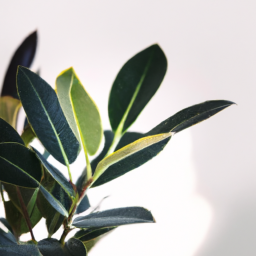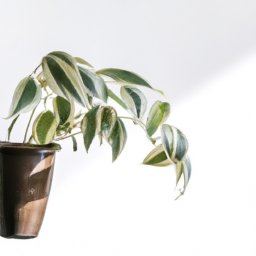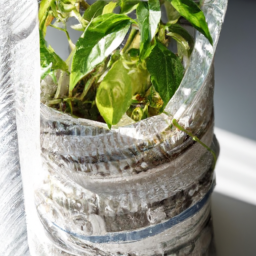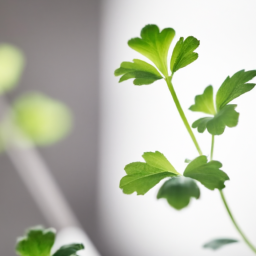
Are you struggling to keep your indoor plants thriving? One key factor that is often overlooked is the importance of providing the right plant light for indoor plants. Many indoor spaces lack the natural sunlight that plants need to photosynthesize and grow, which is where artificial plant lights come in. In this blog post, we will explore the different types of plant lights available, how to choose the best one for your indoor plants, and tips for properly using plant lights to ensure your plants stay healthy and vibrant. Let’s shed some light on the topic of plant light for indoor plants!
Benefits of Using Plant Lights for Indoor Plants
Improved Growth and Health
When it comes to growing indoor plants, one of the biggest challenges is providing them with enough light. Natural light is always the best option, but sometimes it’s just not enough, especially during the winter months or in rooms with limited sunlight. This is where plant lights come in handy. By using plant lights, you can ensure that your indoor plants are getting the right amount of light they need to thrive. Plant lights provide a full spectrum of light that mimics natural sunlight, promoting healthy growth and overall plant health.
In addition to providing the right amount of light, plant lights also help indoor plants photosynthesize more efficiently. This means that plants can convert light into energy more effectively, leading to faster growth and stronger, healthier plants. With the use of plant lights, you can expect to see your indoor plants flourish and bloom like never before.
Another benefit of using plant lights is that they can help regulate the growth of indoor plants. With the right amount of light, you can control the growth patterns of your plants, preventing them from becoming leggy or spindly. By adjusting the intensity and duration of the light, you can encourage your plants to grow in a more compact and bushy manner, resulting in more attractive and aesthetically pleasing indoor plants.
Overall, the benefits of using plant lights for indoor plants are clear. From promoting healthy growth and photosynthesis to regulating growth patterns, plant lights are essential for any indoor gardener looking to create a thriving indoor garden.
Extended Growing Season
One of the greatest advantages of using plant lights for indoor plants is the ability to extend the growing season. With plant lights, you can grow a wider variety of plants indoors all year round, regardless of the weather outside. This means that you can enjoy fresh herbs, vegetables, and flowers even during the winter months when outdoor gardening is not possible.
By providing your indoor plants with the right amount of light they need, you can create an ideal growing environment that mimics the conditions of the outdoors. Plant lights allow you to control the amount of light, temperature, and humidity, giving you the flexibility to grow a wide range of plants at any time of the year. Whether you’re a seasoned gardener or a beginner, using plant lights can help you create a successful indoor garden that thrives throughout the year.
In addition to extending the growing season, plant lights also allow you to grow plants that require specific light conditions. Some plants, such as tropical plants or succulents, require more light than what natural sunlight can provide. With plant lights, you can create a customized lighting schedule that meets the needs of these light-loving plants, allowing them to thrive and flourish indoors.
Overall, the ability to extend the growing season and grow a wider variety of plants are significant advantages of using plant lights for indoor plants. With the right setup and proper care, you can create a thriving indoor garden that brings beauty and freshness to your home all year round.
Energy Efficiency and Cost Savings
When it comes to indoor gardening, one of the concerns that many people have is the cost of running plant lights. However, with advancements in technology, plant lights have become more energy-efficient than ever before. LED plant lights, in particular, are known for their energy efficiency and long lifespan, making them a cost-effective option for indoor gardeners.
LED plant lights consume less energy than traditional fluorescent or incandescent lights, saving you money on your energy bills in the long run. Additionally, LED lights produce less heat, reducing the risk of overheating and damage to your plants. With their long lifespan, LED plant lights also require less frequent replacement, further reducing maintenance costs for indoor gardeners.
In addition to energy efficiency, LED plant lights are also environmentally friendly. They do not contain harmful chemicals like mercury, making them a safer and more sustainable option for indoor gardening. By using LED plant lights, you can reduce your carbon footprint and contribute to a greener and more eco-friendly indoor garden.
Overall, the energy efficiency and cost savings of using LED plant lights make them a smart choice for indoor gardeners looking to create a sustainable and budget-friendly indoor garden. With their long lifespan, low energy consumption, and environmental benefits, LED plant lights are an excellent investment for anyone looking to grow healthy and thriving indoor plants.

Types of Plant Lights for Different Indoor Plants
Understanding the Different Types of Plant Lights
When it comes to providing adequate lighting for your indoor plants, it’s essential to understand the different types of plant lights available. The three main types of plant lights are fluorescent, LED, and HID. Each type has its own unique benefits and drawbacks, so it’s crucial to choose the right one for your specific indoor plants.
Fluorescent lights are a popular choice for indoor plants because they are affordable and energy-efficient. They come in two main varieties: T5 and T8. T5 fluorescent lights are more efficient and produce more light than T8 lights, making them ideal for plants that require high levels of light, such as flowering plants. T8 lights are suitable for plants that need moderate levels of light, like leafy greens and herbs.
LED lights are another excellent option for indoor plants because they are energy-efficient and long-lasting. They come in a variety of colors, including red, blue, and full-spectrum white light. Red light is ideal for promoting flowering and fruiting in plants, while blue light is essential for promoting vegetative growth. Full-spectrum white light provides a balanced spectrum of light that is suitable for all stages of plant growth.
HID (high-intensity discharge) lights are the most powerful type of plant lights available. They produce intense light that is ideal for plants that require high levels of light, such as fruiting and flowering plants. HID lights come in two main varieties: metal halide (MH) and high-pressure sodium (HPS). MH lights are ideal for promoting vegetative growth, while HPS lights are best for promoting flowering and fruiting.
Choosing the Right Plant Light for Your Indoor Plants
When choosing a plant light for your indoor plants, it’s essential to consider the specific needs of your plants. Some plants require high levels of light, while others can thrive with moderate or low light levels. Additionally, different plants have varying light color requirements, with some plants needing more red light for flowering and fruiting, while others require more blue light for vegetative growth.
Before purchasing a plant light, it’s crucial to research the light requirements of your indoor plants. Some plants may require specific light spectrums or intensities to thrive, so it’s essential to choose a plant light that meets these requirements. Additionally, consider the size of your indoor space and the number of plants you have, as this will determine the size and number of lights you need.
It’s also essential to consider the energy efficiency and lifespan of the plant light you choose. LED lights are the most energy-efficient and long-lasting option, making them a popular choice for indoor plants. However, they can be more expensive upfront than fluorescent or HID lights. Consider your budget and long-term goals for your indoor plants when choosing a plant light.
Tips for Using Plant Lights Effectively
Once you’ve chosen the right plant light for your indoor plants, it’s essential to use it effectively to ensure the health and growth of your plants. Place the plant light at the appropriate distance from your plants, as too close or too far away can result in stunted growth or burned leaves. Follow the manufacturer’s recommendations for the optimal distance for your specific type of plant light.
Additionally, consider the duration of light exposure for your indoor plants. Most plants require around 12-16 hours of light per day for optimal growth. Use a timer to ensure consistent light exposure for your plants, as irregular light patterns can disrupt their growth cycles. Be mindful of the natural light your plants receive as well, as this will impact their overall light exposure needs.
Finally, monitor your plants regularly for signs of light stress or deficiency. If your plants are not growing or flowering as expected, they may not be receiving adequate light. Adjust the distance, duration, or intensity of the light as needed to meet the specific needs of your plants. With proper care and attention to lighting, your indoor plants will thrive and flourish in their environment.

Tips for Choosing and Using the Right Plant Light for Indoor Plants
Hello plant lovers! Are you struggling to keep your indoor plants thriving? One of the most important factors for the health of your indoor plants is providing them with the right amount and type of light. In this guide, I will walk you through some tips for choosing and using the right plant light for your indoor plants.
Understanding the Light Needs of Indoor Plants
Before we dive into the tips for choosing the right plant light, it’s important to understand the light needs of indoor plants. Different plants have different light requirements, so it’s crucial to match the light conditions in your home with the needs of your plants. Most indoor plants fall into one of three categories:
1. Low light plants: These plants thrive in indirect or filtered light and can survive in areas with minimal natural light.
2. Medium light plants: These plants prefer bright, indirect light and can tolerate some direct sunlight.
3. High light plants: These plants need direct sunlight for several hours a day to thrive.
Once you determine the light requirements of your indoor plants, you can choose the right plant light to help them flourish.
Choosing the Right Plant Light
When it comes to choosing the right plant light for your indoor plants, there are a few key factors to consider:
1. Light intensity: Different types of plant lights emit different levels of intensity. For low light plants, a fluorescent light may be sufficient, while high light plants may require a full-spectrum LED light.
2. Light duration: Most indoor plants need around 12-16 hours of light per day. Consider using a timer to ensure your plants are getting the right amount of light each day.
3. Light color: Different types of light bulbs emit different colors of light, which can affect plant growth. For optimal growth, choose a full-spectrum light that mimics natural sunlight.
By considering these factors, you can select the right plant light for your indoor plants and help them thrive year-round.
Using Plant Light Effectively
Now that you’ve chosen the right plant light for your indoor plants, it’s important to use it effectively to ensure your plants receive the maximum benefit:
1. Positioning: Place your plant light close enough to your plants to provide adequate light coverage without burning the leaves. You may need to adjust the height of the light as your plants grow.
2. Rotation: To promote even growth, rotate your plants regularly so all sides receive equal light exposure. This will help prevent your plants from leaning towards the light source.
3. Monitor and adjust: Keep an eye on your plants and monitor their growth. If you notice signs of light deficiency (e.g., yellowing leaves), adjust the light intensity or duration accordingly to meet the needs of your plants.
By following these tips for choosing and using the right plant light for your indoor plants, you can create a thriving indoor garden that brings beauty and greenery into your home.
Key Takeaways of this article
If you’re a plant lover like me, you know how important it is to provide the right amount of light for your indoor plants. But with so many options out there, it can be overwhelming to choose the best plant light for your green friends. That’s why I’m here to break it down for you and help you make the best decision for your indoor garden.
When it comes to plant lights, there are a few key factors to consider. First, think about the type of plants you have and their specific light requirements. Some plants need more light than others, so it’s important to match the intensity of the light to your plant’s needs. Additionally, consider the size of your space and the placement of your plants. If you have a large area to cover, you may need multiple lights to ensure all of your plants are getting the light they need. And don’t forget to think about energy efficiency and cost when choosing a plant light – there are plenty of options out there that will keep your plants happy without breaking the bank. With the right plant light, your indoor garden will thrive and bring a touch of nature into your home all year round.
FAQ Compilation:
Q1: What is the best type of plant light for indoor plants?
A1: The best type of plant light for indoor plants is LED grow lights. They are energy-efficient, emit the right spectrum of light for plant growth, and can be adjusted to different intensities.
Q2: How far should plant lights be from indoor plants?
A2: Plant lights should be placed 12-18 inches above indoor plants for optimal growth. Be sure to adjust the height as the plants grow to prevent them from getting too close to the light source.
Q3: How many hours of light do indoor plants need?
A3: Indoor plants typically need 12-16 hours of light per day to thrive. You can use a timer to ensure they get the right amount of light even when you’re not around.
Q4: Can regular light bulbs be used as plant lights?
A4: Regular light bulbs are not ideal for plant growth as they do not emit the necessary spectrum of light. It’s best to invest in LED grow lights specifically designed for plants.
Q5: Do all indoor plants require the same amount of light?
A5: No, different indoor plants have varying light requirements. Some plants, like succulents, require more direct sunlight, while others, like ferns, thrive in low-light conditions. It’s important to research the specific light needs of each plant you have.
Dr. Olivia Green is a botanist with over two decades of experience in indoor plant cultivation. She holds a Ph.D. in Plant Biology and has dedicated her career to researching plant behavior in controlled environments. Dr. Green is passionate about helping plant enthusiasts master the art of indoor gardening through her extensive knowledge and practical insights.


